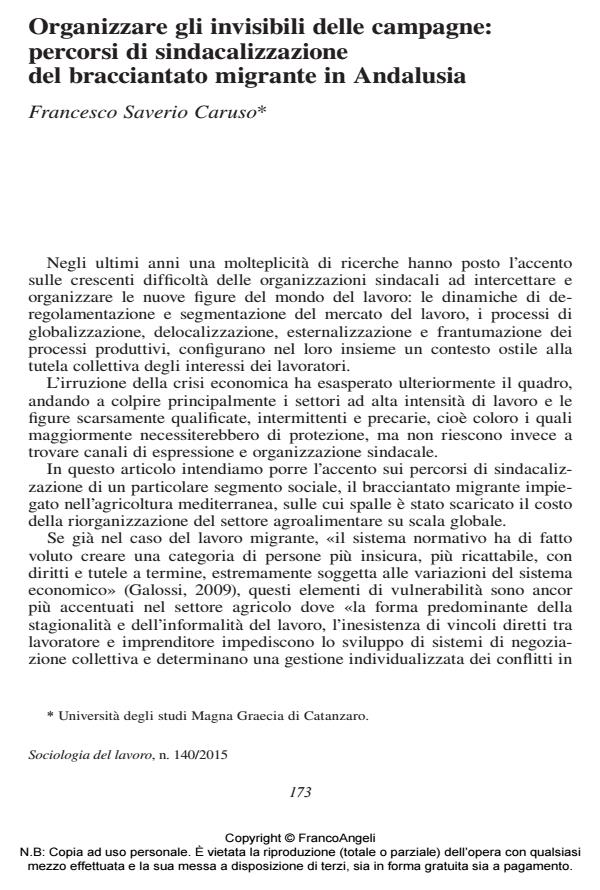Organizing the invisible farmworkers: strategies for union action of migrant farmworkers in Andalusia
Journal title SOCIOLOGIA DEL LAVORO
Author/s Francesco Saverio Caruso
Publishing Year 2015 Issue 2015/140
Language Italian Pages 15 P. 173-187 File size 109 KB
DOI 10.3280/SL2015-140012
DOI is like a bar code for intellectual property: to have more infomation
click here
Below, you can see the article first page
If you want to buy this article in PDF format, you can do it, following the instructions to buy download credits

FrancoAngeli is member of Publishers International Linking Association, Inc (PILA), a not-for-profit association which run the CrossRef service enabling links to and from online scholarly content.
The present work intends to focus on the case study of the "Sindicato de Obreros del Campo", a historic trade union of Andalucian farmworkers that, starting from the demonstration against racist attacks of El Ejido in 2000, has progressively built a unique unionization among the thousands of migrant farmworkers employed in the 30,000 hecteares of greenhouses in the province of Almeria, an intensive agricultural district heavily integrated into global value chains of the agrifood sector. At present, the s.o.c. is a unique case in Spain as the union activists are almost exclusively immigrant workers. In front of the evident difficulties in organizing these precarious, vulnerable and invisible workers by the traditional union strategy, this work shows the adoption of innovative strategies of "Social Movement Unionism" in order to oppose the new systems of private regulation of capitalism.
Keywords: Unionism, migration, global chain, farmworkers
Francesco Saverio Caruso, Organizzare gli invisibili delle campagne: percorsi di sindacalizzazione del bracciantato migrante in Andalusia in "SOCIOLOGIA DEL LAVORO " 140/2015, pp 173-187, DOI: 10.3280/SL2015-140012